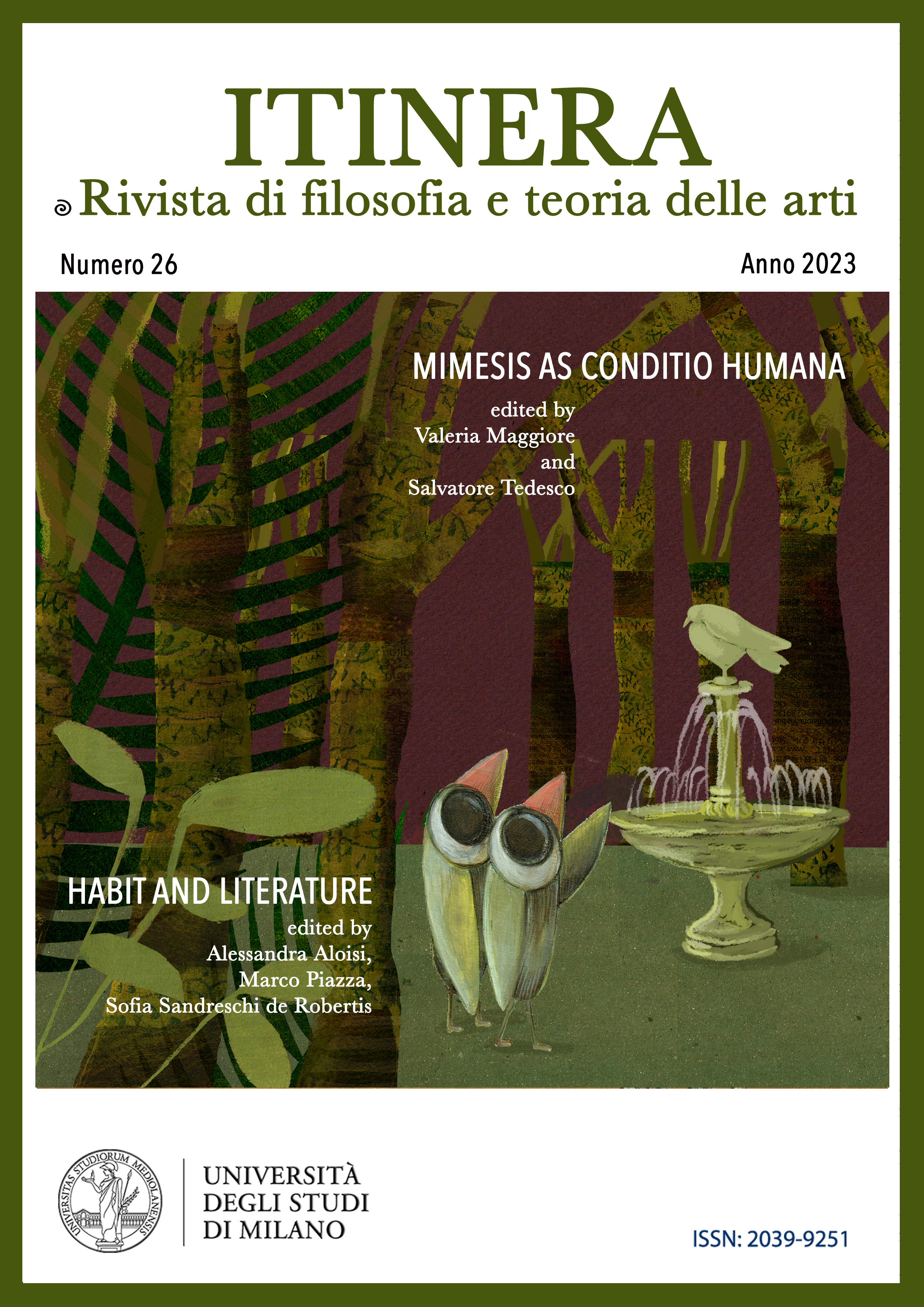A. Boissière, L’Art et le vivant du jeu, Presses Universitaires de Liège, Liège 2023
Parole chiave:
Anne Boissière, L’Art et le vivant du jeu, book reviewAbstract
Anne Boissière’s last book, L’Art et le vivant du jeu inscribes the study of the experience of playing within a methodological challenge: to take seriously the “aisthetic” nature of philosophical inquiry, namely its emergence from our “way of feeling”. Offering descriptions rather than definitions, perspectives rather than theories, Boissière undertakes a philosophical “gesture” which, instead of imposing a “conceptual cage” on the subjects analysed, assumes the affective origin of language, and thought. Indeed, it is the feeling of the “lack” of the pathic dimension of experience within contemporary society that leads Boissière to focus on the “living” dimension of the experience of playing (le “vivant” du jeu), in a way that rehabilitates this dimension from the very way in which the philosophical study of it is carried out. This begins with a way of writing – characterised by the use of the first person and other stylistic choices – through which she “claim[s] the necessity” of a way of doing philosophy that is not “guided by rational argumentation”, but by the “situated” nature of the reflexive and writing experience – an experience that includes that of being “a woman in a theoretical universe, that of philosophy, that is almost exclusively shaped by men”.
Riferimenti bibliografici
A. Boissière, L’Art et le vivant du jeu, Presses Universitaires de Liège, Liège 2023
Dowloads
Pubblicato
Versioni
- 2024-04-27 (3)
- 2024-01-10 (2)
- 2024-01-10 (1)
Fascicolo
Sezione
Licenza
Copyright (c) 2024 Serena Massimo

Questo lavoro è fornito con la licenza Creative Commons Attribuzione - Condividi allo stesso modo 4.0.
Gli autori che pubblicano su questa rivista accettano le seguenti condizioni:
1. Gli autori mantengono i diritti sulla loro opera e cedono alla rivista il diritto di prima pubblicazione dell'opera, contemporaneamente licenziata sotto una Licenza Creative Commons - Attribuzione - Condividi allo stesso modo 4.0 internazionale che permette ad altri di condividere l'opera indicando la paternità intellettuale e la prima pubblicazione su questa rivista.
2. Gli autori possono aderire ad altri accordi di licenza non esclusiva per la distribuzione della versione dell'opera pubblicata (es. depositarla in un archivio istituzionale o pubblicarla in una monografia), a patto di indicare che la prima pubblicazione è avvenuta su questa rivista.
3. Gli autori possono diffondere la loro opera online (es. in repository istituzionali o nel loro sito web) prima e durante il processo di submission, poiché può portare a scambi produttivi e aumentare le citazioni dell'opera pubblicata (Vedi The Effect of Open Access).





